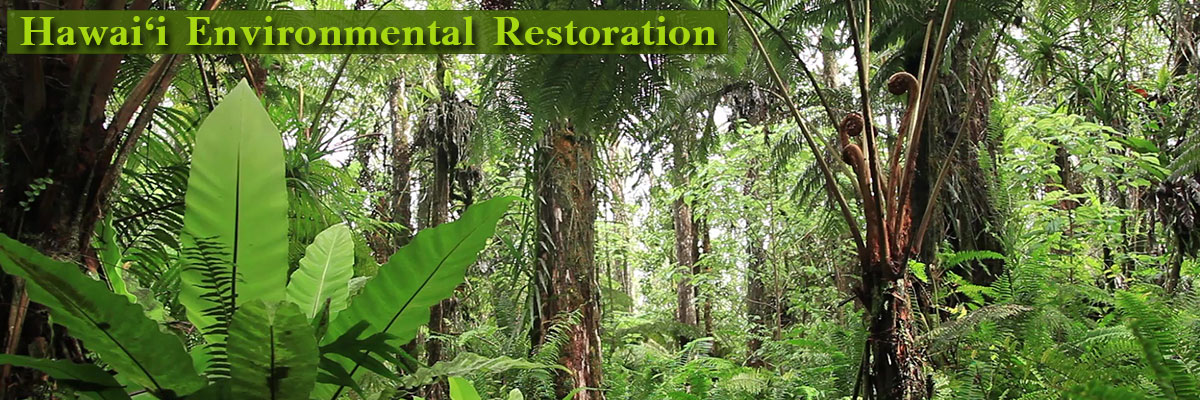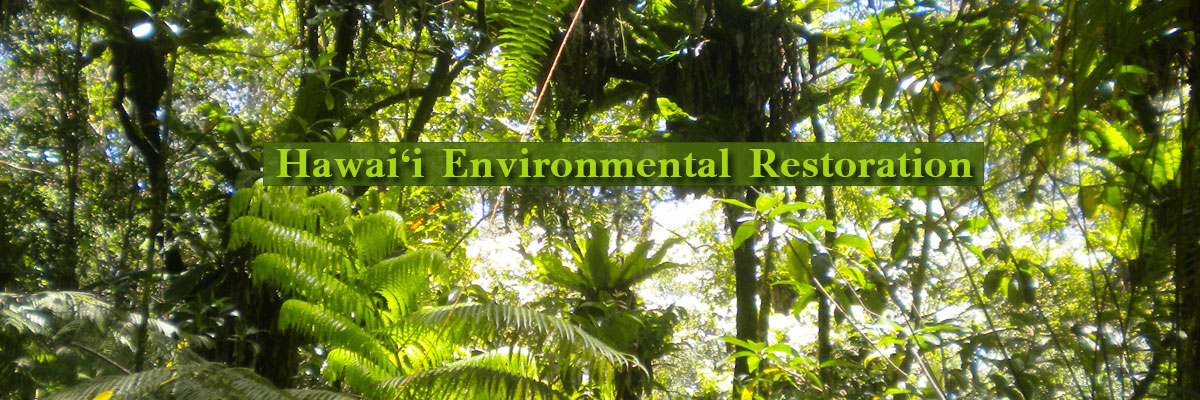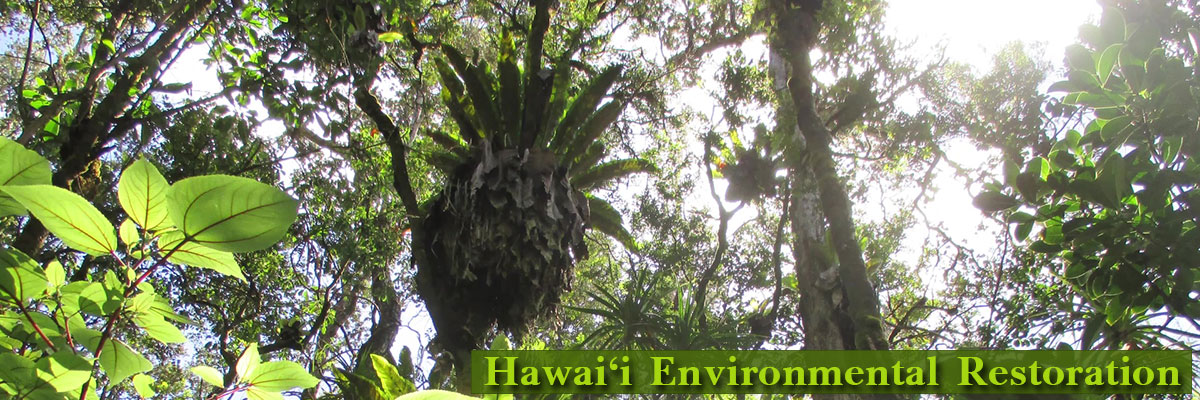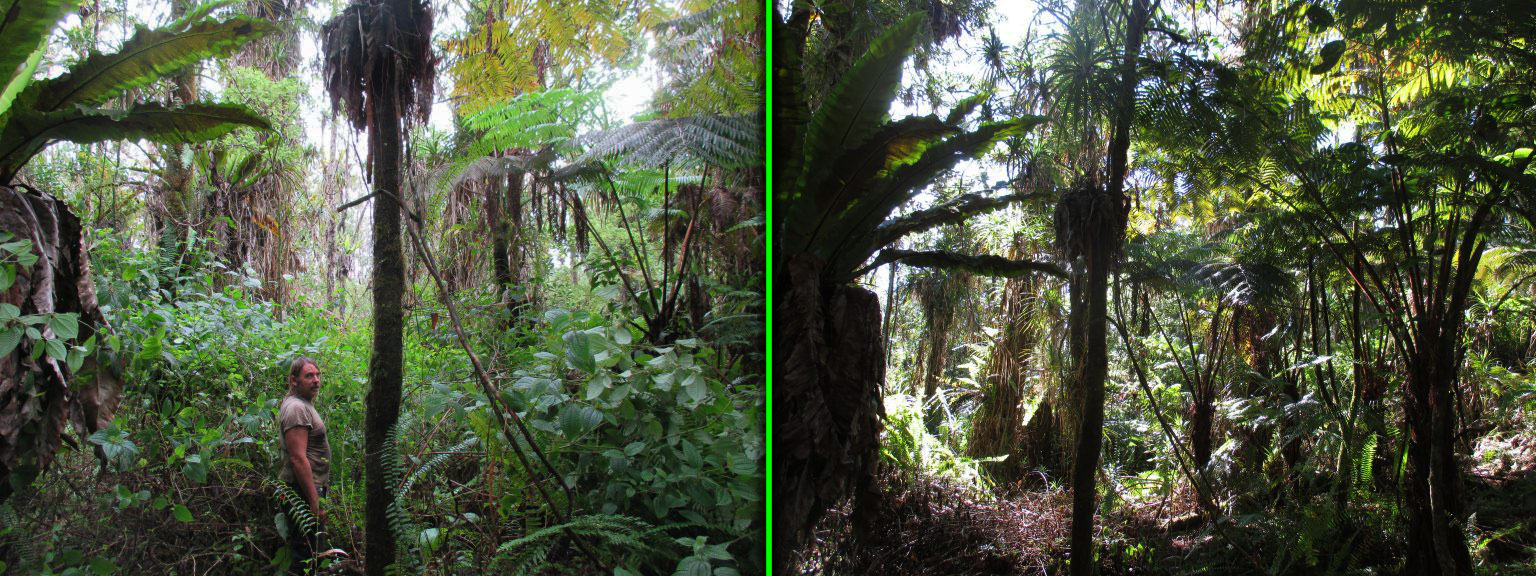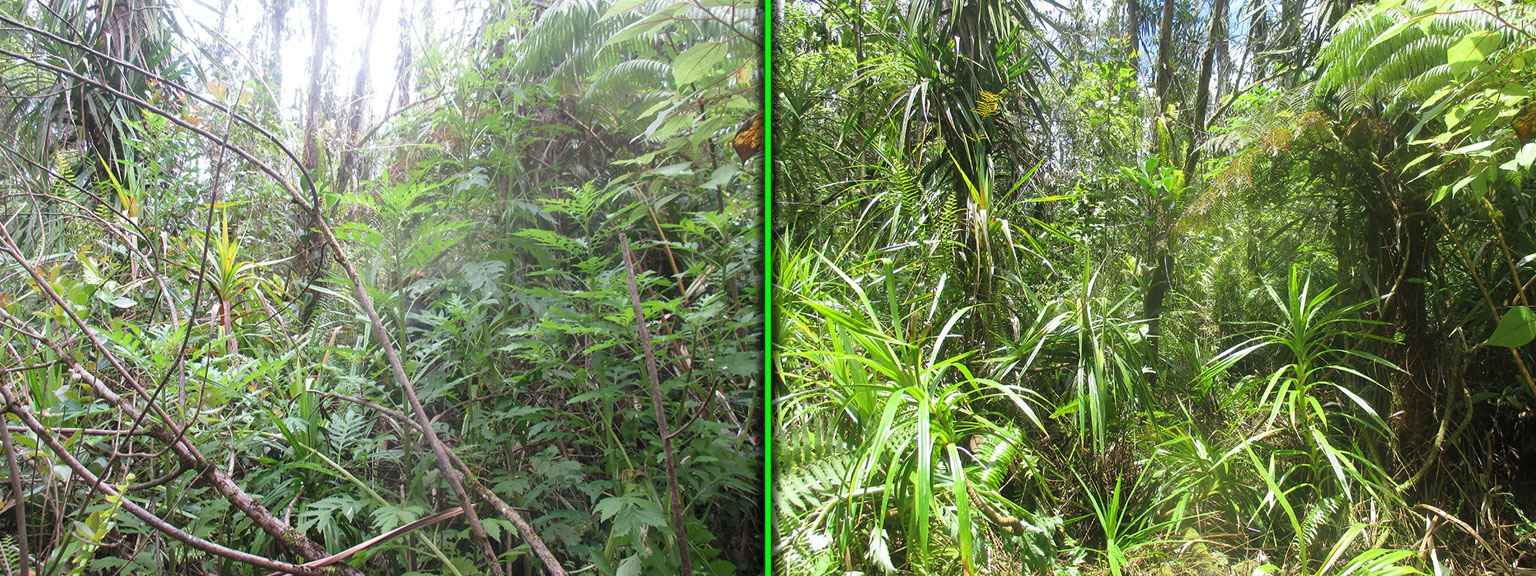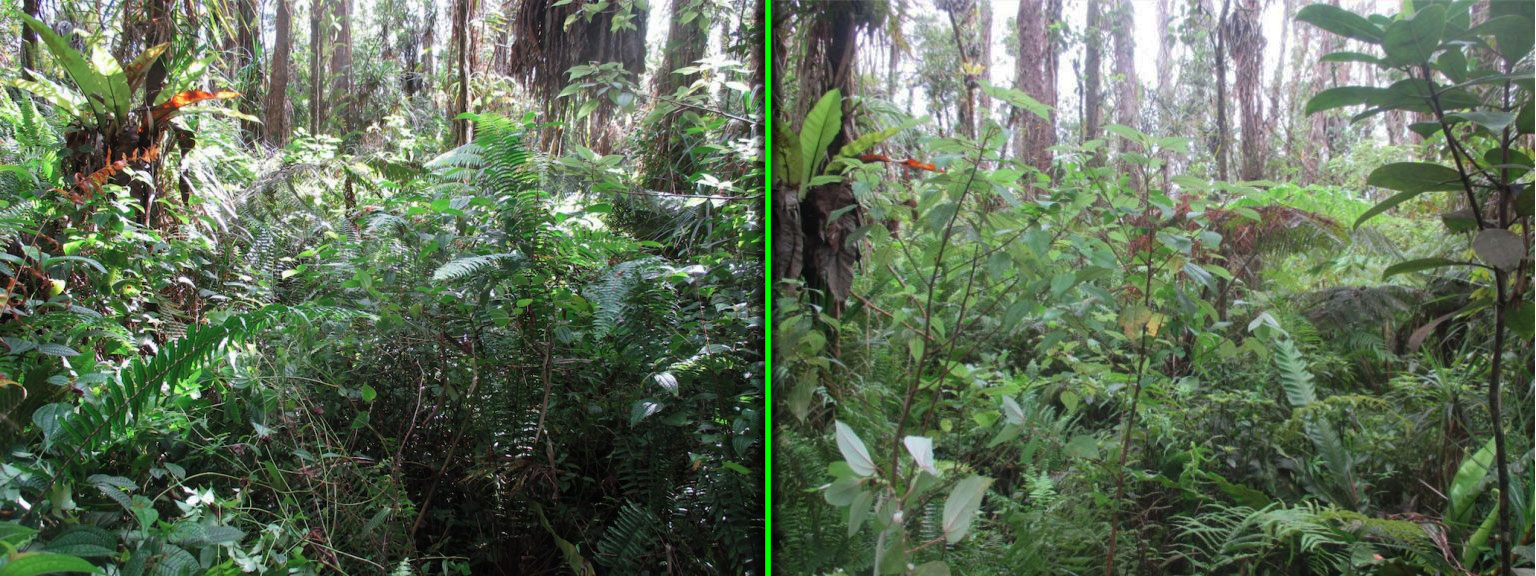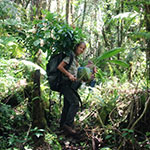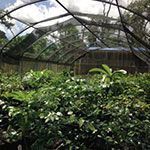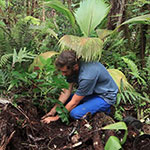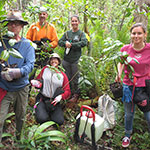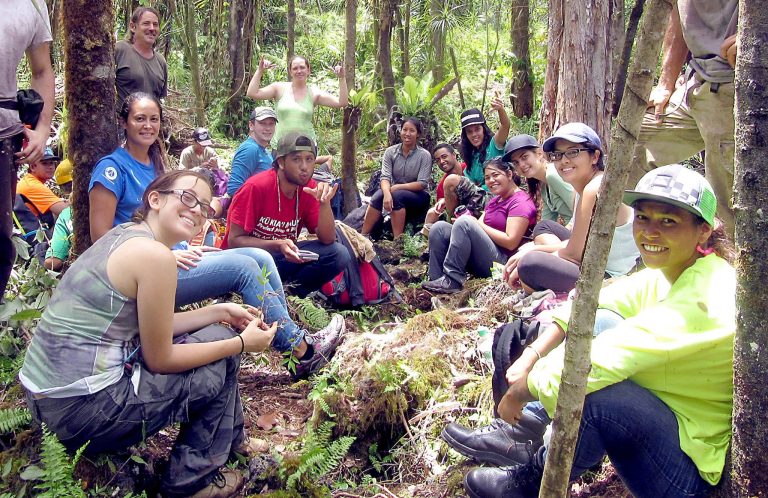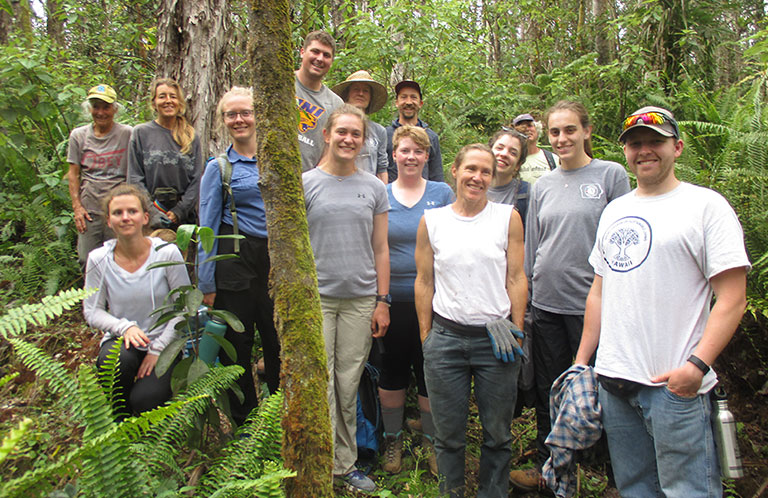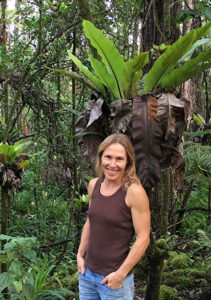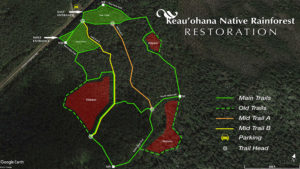
‘Ua ike i ka lani o ka ‘aina
‘E ulu i ka pai ‘aina ‘o Hawai’i
The beauty of the land be revealed,
that we may flourish upon the Hawaiian Islands.
Keau’ohana Rainforest Restoration Video
Hawai’i Environmental Restoration (HER)
Hawaii Environmental Restoration has expanded its breadth in recent years to supports a number of other restoration projects and now stewards several hundred acres of land in the Puna District of Hawai’i. To learn more about these projects please view HER Other Projects page for details on restoration efforts in the Halepua’a Forest Reserve, the stewardship of Wai’ele PONC lands. and the management of Koa’e greenhouse.
HER’s primary project focuses on the restoration and preservation of Keau’ohana State Forest Reserve, the largest and most intact lowland rainforest remaining below 1,000 feet in the State of Hawai’i. Of five State Forest Reserves set aside for conservation in 1903, Keau’ohana is the only Puna reserve in which the original forest composition has not been replaced by invasive species due to lack of management.
Since June of 2014, Keau’ohana has undergone an intensive restoration process that has focused on the control of invasive plant species, and the planting of native species on ~30 acres of the most biodiverse portion of the reserve. Our crew (4 to 8 forest technicians depending on funding) has continued weekly restoration efforts toward preserving this precious resource through a good number of environmental and socio-economic challenges (feral pig damage, Hurricane Iselle, Rapid ‘Ōhi‘a Death, the 2018 Lava Event, and now Covid-19).
In June of 2021, the Keau’ohana crew completed four systematic passes of the entire 30 acre (volunteer areas and over two miles of trails have required several additional passes every year). Due to the effect of ROD on the forest canopy, we have now consolidated the restoration site to focus on its most promising portions within its 20 acre core. In this way we are able to revisit intact forest areas more often and offer enhanced long-term potential with minimal resources.
Keau’ohana is today a last remaining lowland reservoir providing habitat for many rare native and endangered species. Protecting the few remaining native forests is crucial to preserving Hawai’i’s unique cultural and biological resources.
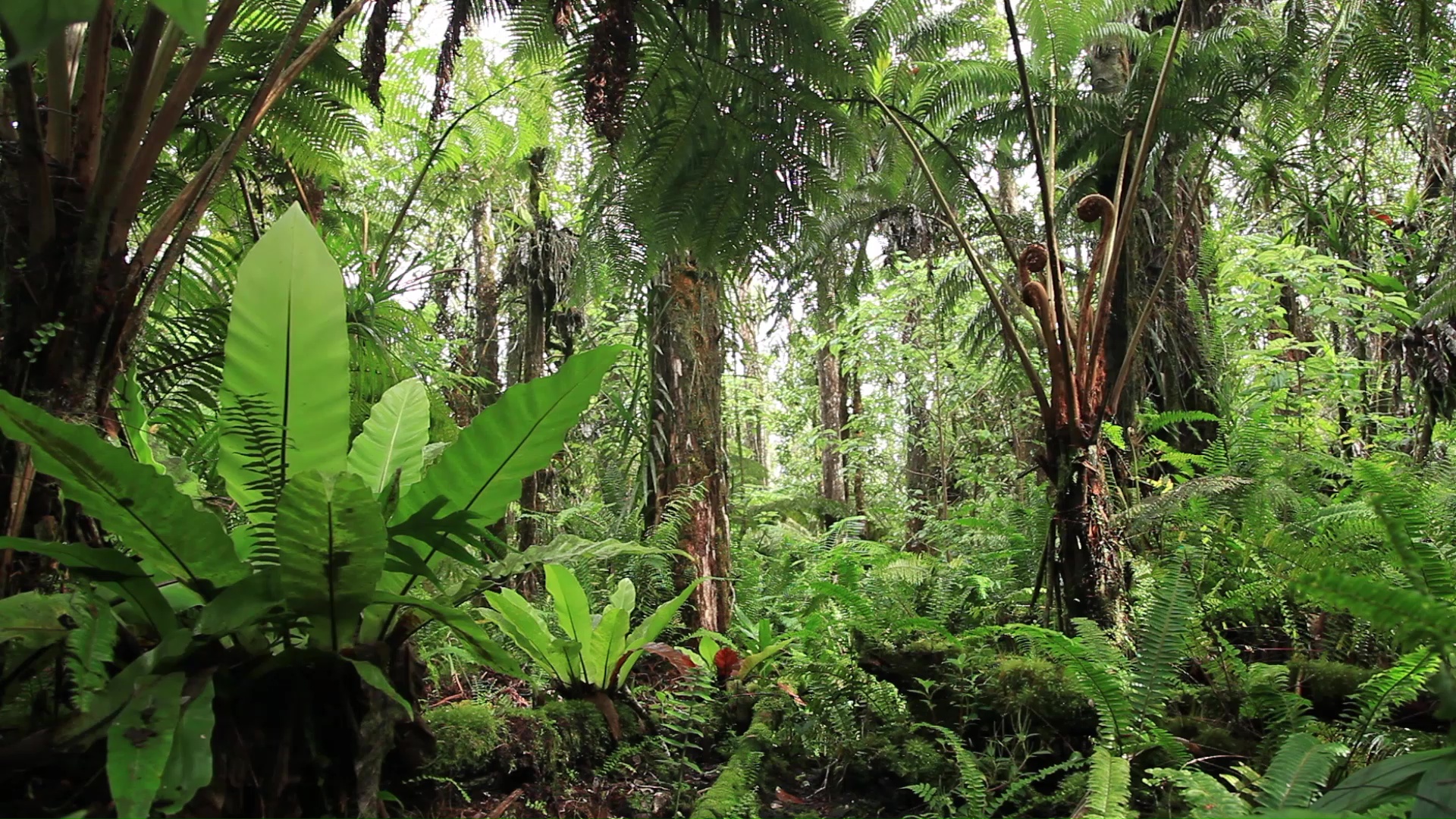
Invasive Species Control
Hawaii’s native plants face great pressure from invasive species and loss of habitat. In this tropical environment, being persistent is essential in order to eliminate re-growth before the next generation of invasive species attains maturity, and thus maintain leverage over plant invasion levels. This greatly diminishes the seed bank and helps perpetuate native forest regeneration.
Restoration control methods in the field largely include hand-pulling and composting of plant individuals that can be pulled; managing compost piles; applying localized injections of herbicide to cambium layer of larger stems and trees; spraying larger clusters of invasion with a foliar application of herbicide; trail maintenance/improvement, and the breakdown and consolidation of dead wood where needed.
Before and after images of restoration efforts
Native Plant Propagation
The planting of native trees is an important component of our restoration work. We have a native plant nursery in Koa’e/Kapoho managed by Ann Kobsa, that supplies the project with the vast majority of seedlings for periodic out-planting (native out-plant species).
The loss of canopy due to ROD poses a stronger need to develop new shade in support of the native understory. Many native canopy trees are being planted on site, but it will take time to reach levels whereby less manual labor is needed.
Keau’ohana is today a last remaining lowland reservoir of rare native species, and its surviving biota is of great biological significance. Protection of this native ecotype provides habitat for many rare native and endangered species.
Community Outreach
The educational component of our efforts is equally important to HER. Keau’ohana is a living classroom for many local and international volunteer students, community groups and individuals to learn about native forest restoration, and about general Hawai’i plant issues and solutions. HER participation in community outreach events, and public presentations in schools and with community groups also educate people on how they could help support the lowland environment beyond the forest as well, by making wise plant choices for sustainable living in their own lives. Presentations are offered at any location on the Big Island on a donation basis for anyone wishing to coordinate an educational event on what it means to “Malama O Ka ‘Aina”, to “Take Care of the Land”, here in Hawai’i (Power Point Presentation 2022 / Recorded).
Though we have a paid staff, volunteerism is a fundamental model for HER, who now has over 530 subscribed volunteers and members. Volunteer opportunity has provided an average of over 900 volunteer hours per year since 2014; has accrued well over 5,000 volunteer work hours; and facilitated an average of one or two special events per month (excluding 2020 due to COVID). Despite last year’s limitations, a total of 584 trees were planted in 2020 alone. Among many special events, quarterly volunteer work parties in the forest are held per year in honor of solstices and equinoxes! These are very often tree planting occasions that are much enjoyed by all participants.
President of Hawaii Environmental Restoration and Keau’ohana Native Rainforest Restoration Director, Jaya C. Dupuis /MS, has since 1989 immersed herself in the natural world of subsistence farming and the study and restoration of native rainforests of Hawai‘i. Jaya’s mission also involves community outreach and education of critical lowland vegetation issues. Through this work, she wishes to inspire the appreciation and re-integration of native species into Hawai‘i’s lowland environment for esthetic and historical purposes, as well as to support the control of invasive species that threaten native forest integrity and the general lowland environment.
